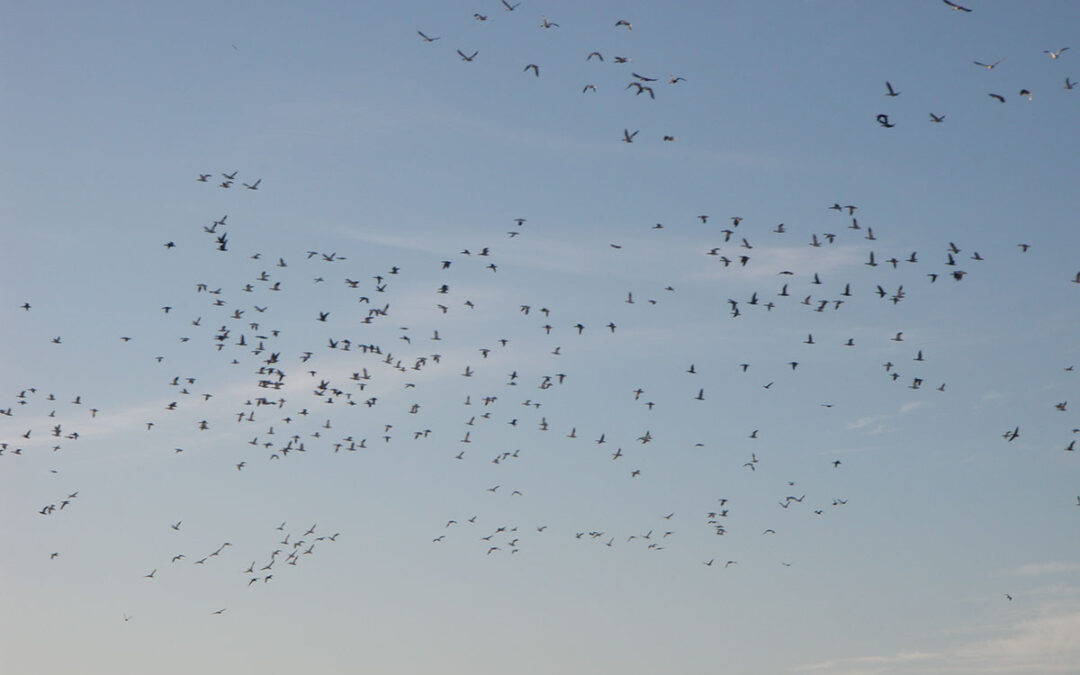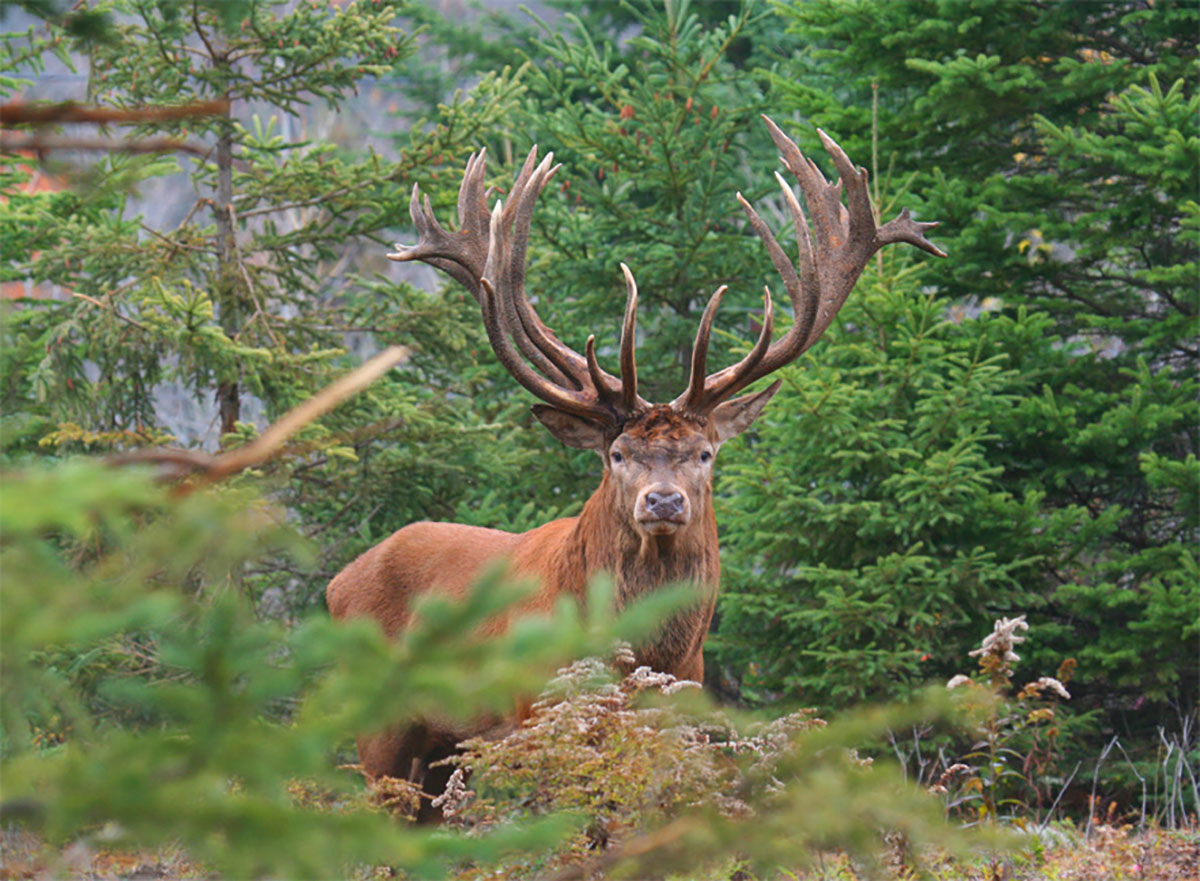I am a New England Ruffed Grouse hunter, and the Western Canadian waterfowl, upland birds and prairies were a new world to me.
Sharptail grouse thrive in Saskatchewan and so do those who hunt them. Around Tessier the Sharpies feed in the huge grain fields and shelter in the hedgerows that border those fields. And my outfitter, Bentley Coben, knows the farmers that own these fields by their first name. He has hunted this area from boyhood, so Bentley knows where the Sharptails have been in the past and where to look for them in the present.
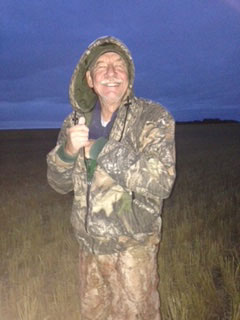
Bentley Coben.
I had “found” Bentley while I was hunting ruffies in Maine. At dinner on that first night I had been seated with two doctors from South Carolina who were in Maine gunning ruffed grouse for the first time. As conversations among hunters go, eventually we got around to dream hunts. I said that I’d always wanted to hunt waterfowl and upland birds in Western Canada. One of the Docs reached into his wallet and got out Bentley Coben’s phone number.
“Bob, we were in Saskatchewan three weeks ago hunting mostly waterfowl. We had an amazing, jaw-dropping time. We saw huge amounts of birds, birds we don’t get a chance to hunt in the Eastern United States. Bentley is a waterfowl specialist but, he’ll get you into Sharptails and Hungarian partridge also. We recommend that you talk to him and tell him what you want.”
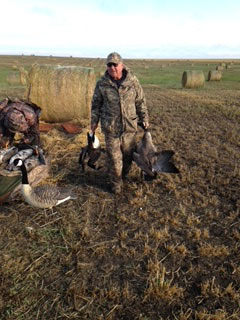
Colin Coben.
And then they tripped over themselves telling me about their waterfowl hunts – the decoying birds, the blinds, the shots, the care and attention they received from Bentley and his wife, Dianne, the comfortable quarters and the food Dianne prepared.
“Bentley guides for waterfowl, but he knows upland also, he’s been hunting that area for years. We got two memorable afternoon upland bird hunts in. If you want to walk them up, he’ll find you birds. Bentley doesn’t own hunting dogs, so you’ll flush them yourself. He’ll get you within a couple hundred yards of the birds but hitting and retrieving them are up to you.”
Then I made one of the best decisions I’ve made in a lifetime of hunting. I picked up my cell phone and made a call to Saskatchewan. That was ten years ago. I’ve been back in September every year since. For geese, for ducks and for those birds which are side-issues to Bentley, Sharptails and Huns. Ten years – the hospitality hasn’t changed; the food and comfortable quarters haven’t changed; the harvested fields, the farmers and coverts haven’t changed. The only things that change are the birds and the weather. Hunting is always a challenge, even in Saskatchewan. But there are red letter days.

Farmstead with surrounding hedgerows full of Sharpies and Huns.
A knock on the door at 05:30. Bentley has already made coffee, and in the break room I prepare a big cup. Toast and fresh fruit are my early food choices. Leave at 6 A.M. for a twenty-minute drive to a cut grain field. Grass the layout blinds and help Bentley and his brother Colin set up a rig of Canada geese decoys. Two Mojo mallards are also part of the set up. Bentley and Colin handle those.
We finish setting up the rig just before shooting time. Bentley leaves as Colin gives the blinds a last look and a few more strategic handfuls of camouflage. Colin gets into his blind fifteen feet behind his five hunters. He doesn’t have a shotgun. His job is to watch for waterfowl, to keep us informed and to call the shot. The five hunters in the blinds in front of him will do the shooting.
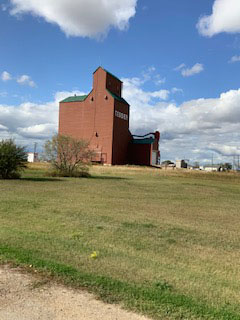
Tessier.
Bentley told us in a brief safety meeting, “When Colin calls the shot, the birds will be right in front of you. Don’t move and just wait for the call. Pick one bird. Then shoot ’em in the face. I’ll be watching the first flights with binoculars to see that things are right. Then I’ll go scouting and leave you in Colin’s hands.”
The flights came, and the birds decoyed into the hole in front of us. That first day we had flight after flight come into our rig. Canadas, Specklebellies, Mallards, Pintails, Snows, even one flock of Sandhill Cranes. Colin barely had time to get back to his blind from gathering dead birds when another group appeared off in the distance. A few calls, and once again the birds’ landing gear went down as they settled into our decoys. Even the white geese were decoying. We five shooters had the time of our lives, and Colin’s eyes threw sparks of joy as he ran in with our latest bag.
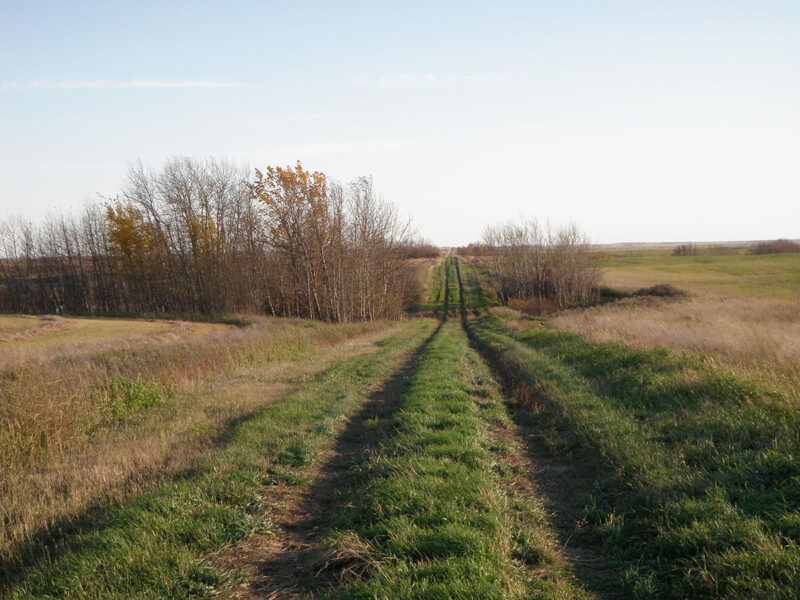
Two track on the way.
“Pintails circling,” Colin spoke just above a whisper. “And another flock behind. This one’s Mallards.” Colin pressed the remote-control switches and turned on both the Mojo Mallards. We hadn’t been using them on the geese because experience had shown us that both whites and darks flared at the flappers, but the ducks — they came in to Mojo movement as if on a string.
We watched the Sprig circle our rig, come together with the Greenheads and then part again into separate flocks. The ducks were still wearing early colors. Their feathers wouldn’t come “into full bloom” for over a month. Finally both flocks came in, the Pintails on my side, toward the left Mojo and the Mallards to the right flapper. We watched as their wings cupped, as their legs extended, as they caught the wind for landing. Hearts pounding, fingers tense, breath shortened, we waited for Colin’s call. What a sight. Jim and I would shoot the Pintails; Frank and George the Mallards; Russ, in the middle of our lay-downs, could shoot either side.
Well, things change. “Colin, big swarm of ducks low on the right,” said Frank.
“Hold off, hold off,” Colin whispered. “Let those two front flocks land. We’ll try for the big one coming on the right and pick up the others as they flush.”
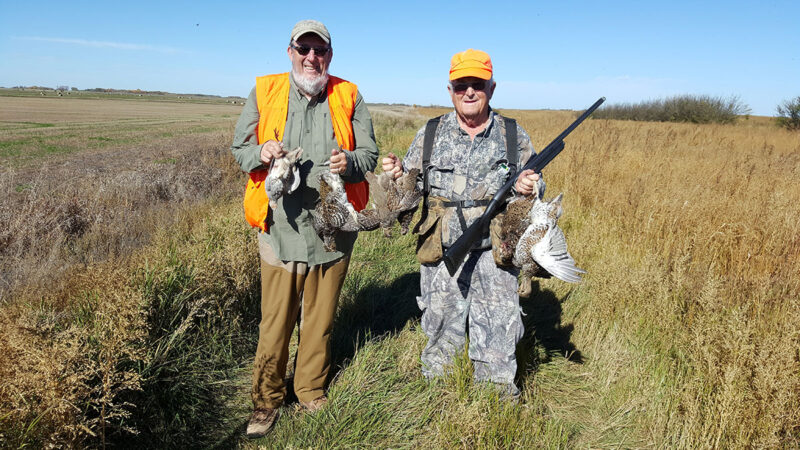
George and author with sharptails and Hungarian partridge.
The Pintails landed around the Mojo in front of me. On the right, Mallards were hanging in the air above the other flapper. Farther to the right, the swarm of mixed Sprig and Greenheads – the ones we were waiting for – came at us low with the birds jinking left and right, some with wings set, others dancing in the air, performing strenuous maneuvers to be the first into the feed.
Colin made the decision and the call. “Take ‘em!”
I was still getting my shotgun up when Russ opened-up in the middle. The birds started to flare, fly right, left and up. The ones in the field jumped up and joined the melee in the air above our decoys. I was shooting as fast as I could pump my Model 12. Jim was shooting on my right, and I heard Frank and George at work on the other side of our line. Russ had already emptied his autoloader.
I didn’t see the other hunters. I was intent on shooting, watching over the barrel of my gun as birds dove, swooped, curved, jumped and, yes, fell. All of us reloaded and had shots at strays. We searched the field and picked up Mallards and Pintails.
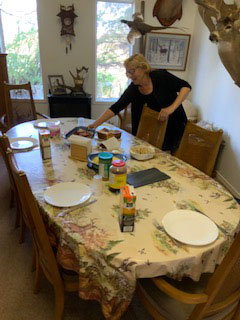
Dianne Coben with second breakfast.
At 11:30 A.M. we arrived back at Bentley’s place in Tessier. Dianne was putting the finishing touches on a second breakfast as we walked in the door. Bacon, sausage, French toast, biscuits, fixings, orange juice, coffee and eggs fried to order. The table groaned – and after the meal so did we. While wolfing down the meal, we reviewed the morning hunt. The hunting stories were only interrupted by Dianne’s smiles and our murmurs of appreciation as she brought more food to the table.
Over the last of his eggs Bentley said to me, “Frank is going to help me and Colin clean the birds. Russ and George are going to clean their guns and rest. You and Jim said you wanted a crack at Sharpies and Huns. I saw some while I was out scouting. Colin’ll take you out after we finish the birds. You’ll leave in an hour. Okay with you?”
Jim and I smiled and nodded. “We’re okay with that. See you in a few.”
Jim screwed an improved cylinder choke into the barrel of his pump. I put my Model 12 away and picked up my old and well-used Mossberg pump. With the Mossberg’s improved cylinder choke and tang safety I was ready for upland birds. We changed into brush pants and blaze orange hats. We picked up lead sixes out of our ammunition boxes and put away the waterfowl loads. When Colin walked in the door, we were ready.
Colin drove us over pavement and then down the two track dirt roads leading to the goose fields and bird covers. We all watched the grass, trees and brush on both sides of the road. You never know.
“I’m taking you to a place Bentley and I have hunted since we were kids,” Colin said. “There are brush and hedgerows and feed. I’ll point you down a hedgerow and follow your progress from the truck. Bob, you take the left side; Jim, you take the right.”
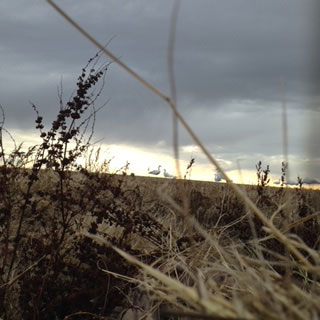
“I’d always wanted to hunt waterfowl and upland birds in Western Canada.”
Jim and I nodded. We’d done this on some of our covers in Connecticut, walking both sides of the brush beside a meadow with a dog between us in the hedgerow. If these birds flew like the hedgerow Ruffed Grouse back home, one of us should get a shot. And today we were the dogs. We would both be flushing and retrieving. Shooting too.
“If you hit a Sharptail, shoot it again,” Colin instructed. “These birds are tough and if they’re running in the field, we won’t find them. A follow-up shot’ll make sure the bird’s dead when he hits the ground. Mark where he falls and walk right to that spot. That’ll make all our lives easier.”
Colin pulled over and parked. He pointed at a long hedgerow bordering a cut pea field. There was twenty feet of high grass running along both sides of the fifteen-to-twenty-foot high hedgerow. “Bentley saw Sharpies here this morning when he was checking this pea field. They’re probably somewhere in that hedgerow, in the shade.”
Jim and I got out of the truck, loaded our pumps for upland birds and began to move, me on the left of the long row of trees and Jim on the right. As we used to do while Ruffed Grouse hunting, we’d stop and stamp our feet every twenty steps or so. We were able to keep track of each other by looking through the hedge. We pretty much stayed abreast and when one got ahead of the other, he paused so that the other hunter could catch up.
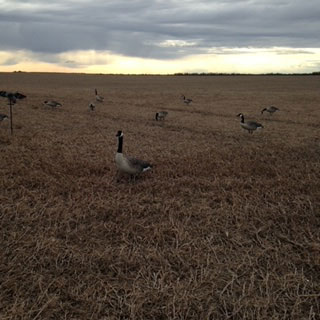
“The only things that change are the birds and the weather.”
Two hundred yards down the hedgerow, I paused to let Jim catch up and heard the hard flutter of a flush behind me. I spun, shot and hit a Hungarian partridge that had tried to back door me. Following Colin’s advice, I shot again. The bird had waited until I passed. Quickly after my second shot, I heard Jim fire three times.
“Dead bird,” I yelled. “You do any good?”
“Got one down,” Jim replied. “Five got up at your shots. Right in front of me. First shot missed, and the last two brought a bird down.”
“Mark where he went down with your hat. Mine is in plain sight, I’ll pick ’em up and come through to help you look.” I found a thin spot in the brush and pushed through just in time to see Jim pick up his first Hun.
Colin drove up in his truck and took the birds after we wrapped a government issued tag around their legs. “I marked where most of those Huns went down,” he said. “Up ahead about three football fields, where the hedge makes a sharp right turn. Most of them went in there. If they behave normally and stay there, that’ll be a hot corner.”
Jim and I approached the suspected position of the covey with confident steps, him on the right side of the hedge and me on the left. Colin watched from afar.
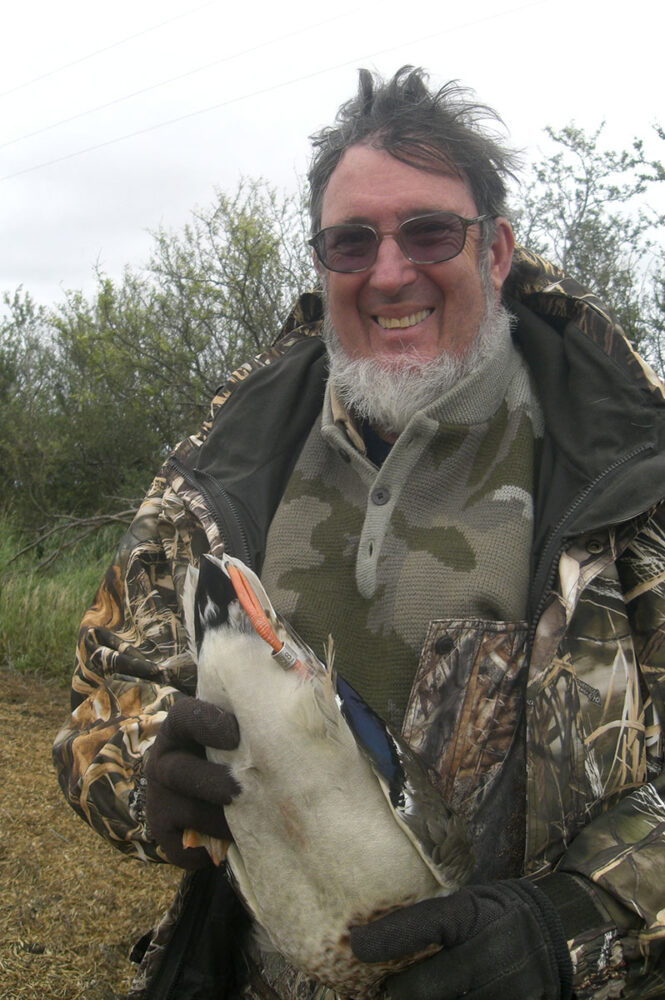
Author with a banded mallard.
As we came to the corner, Jim stopped to let me take a wider turn and catch up to him. The covey, panicked by his pause, flushed. They had seen him, but not me. They flew to my side and a Hun almost knocked my hat off. It was as if a bomb had gone off in the hedge and pieces of feathered fragments were flying all around me. I got off one shot. I missed. And watched a flight of ten birds fly out of range and over the horizon. Those birds were very much gone.
And then came a flutter and a shot from Jim’s side of the hedgerow. One final bird had come up late and, alarmed by my shot, flew his way. “Dead bird,” he shouted. “I’ve got him. How’d you do?”
I shook my head and said, “No joy. I missed. They came up all over me. I’ll tell you about it in the truck.”
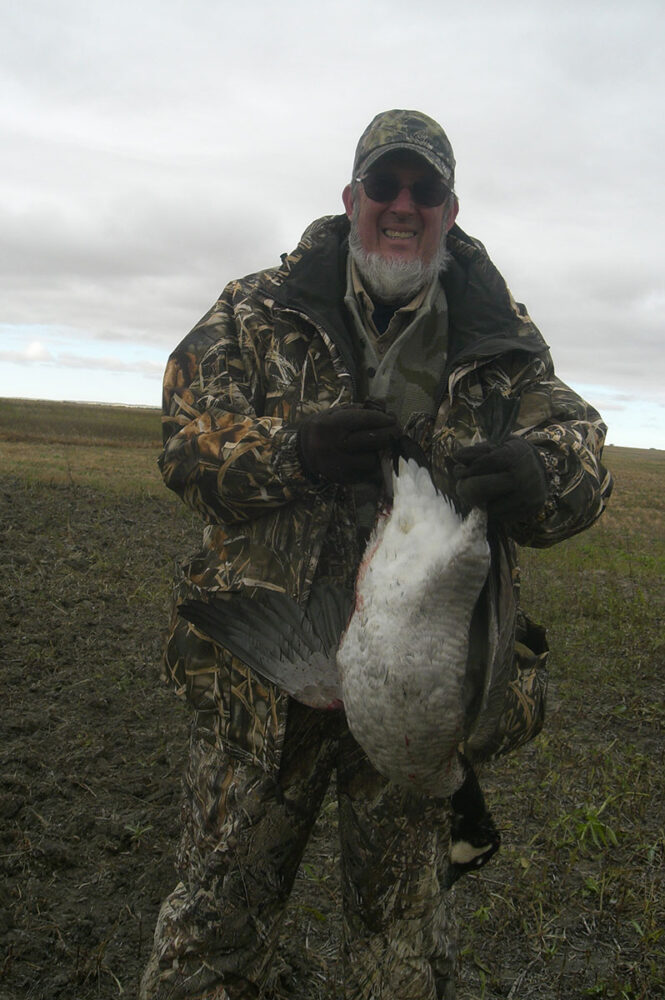
Canada goose.
Colin drove up and said, after he finished laughing and sympathizing, for he’d seen the whole thing from his truck, “Bentley just called me. He’s spotted some Sharptails gravelling a few miles from here. These birds are gone. Let’s find some Sharpies.”
We got into the truck, and Colin drove us twenty minutes down dirt roads and two tracks to the area that Bentley had found. Colin stopped the truck and pointed to a couple of acres of overgrown and brush-filled flatland. “They’re in there. Work it line abreast fifteen yards apart. Walk a few steps and stop. Keep an eye on each other and don’t get ahead of your partner.”
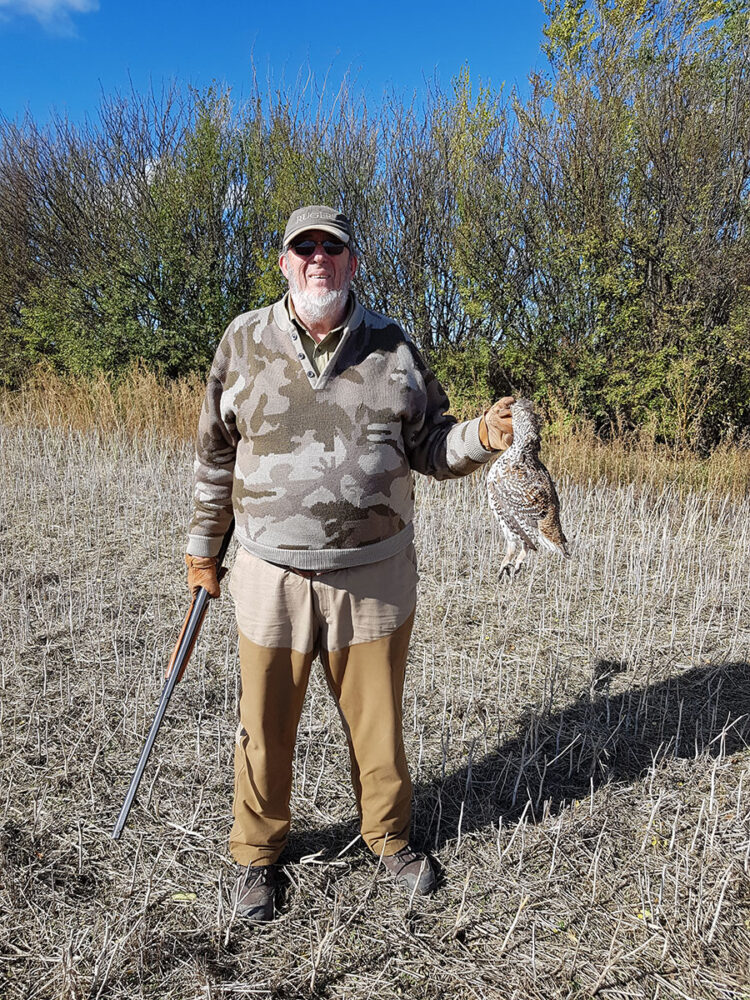
Sharptail.
Jim and I nodded and smiled. We knew this tune. We’d played it for years going after Ruffed Grouse back East. Now we’d play it here in the West for Sharptails.
With our shotguns at port arms, we walked into the brush, Jim on the right and me on the left. The space between us varied from ten to twenty yards depending on the walking and viewing conditions. Hoping to scare birds into the air, we stopped, stamped and started again often.
We were 150 yards in when I heard the beating of wings ahead and to the right of me. “Bird,” I yelled. “Towards you.”
At the shot, I heard birds flush all around me. Most were a hidden flash of brown low in the brush, but one gave me a two second look and folded up at my shot. Jim shot again
“I’ve got two Sharpies down,” he called. “I’ve marked them.”
“I’ll find mine and come help you,” I called back.
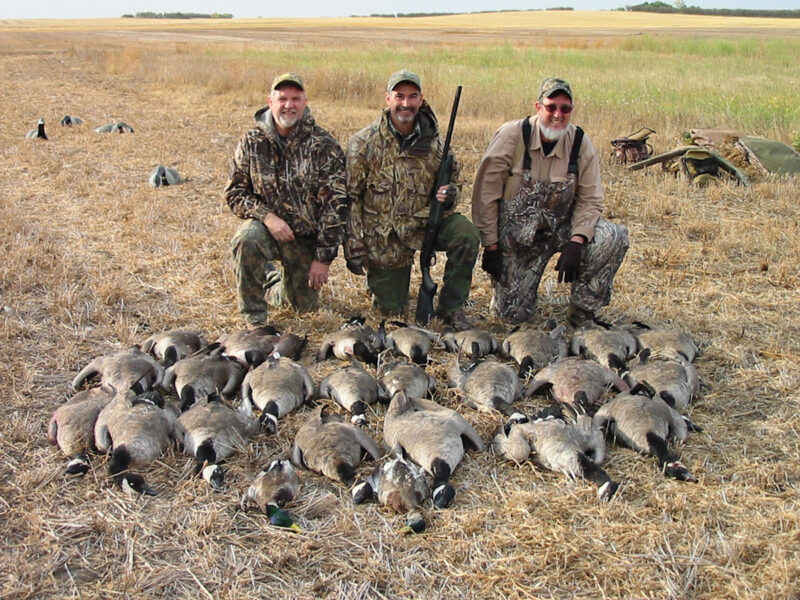
“Then I made one of the best decisions I’ve made in a lifetime of hunting. I picked up my cell phone and made a call to Saskatchewan. That was ten years ago. I’ve been back in September every year since.”
I walked directly to the spot where I thought my Sharptail had come down, hung my hat on a high branch and started looking. I circled the hat, gradually increasing the distance. Then I did it again, and again. I found that bird twenty minutes later, after both Jim and Colin had come to help me. It had burrowed into a thick clump of brush and grass and died. I only found him because I stepped on him. He was fifteen feet away from my hat. Jim and Colin and I had walked right over him several times. Those naturally camouflaged birds could hide that well! Jim had found both his birds in half the time.
“We gotta leave,” Colin said. “Bentley’s got a good field scouted for white geese and you need to change guns and gear. I’m parked along the edge over here. We’ll try this again tomorrow if you want. Right now, we’re gonna get moving. The whites won’t wait, and neither will Bentley.”
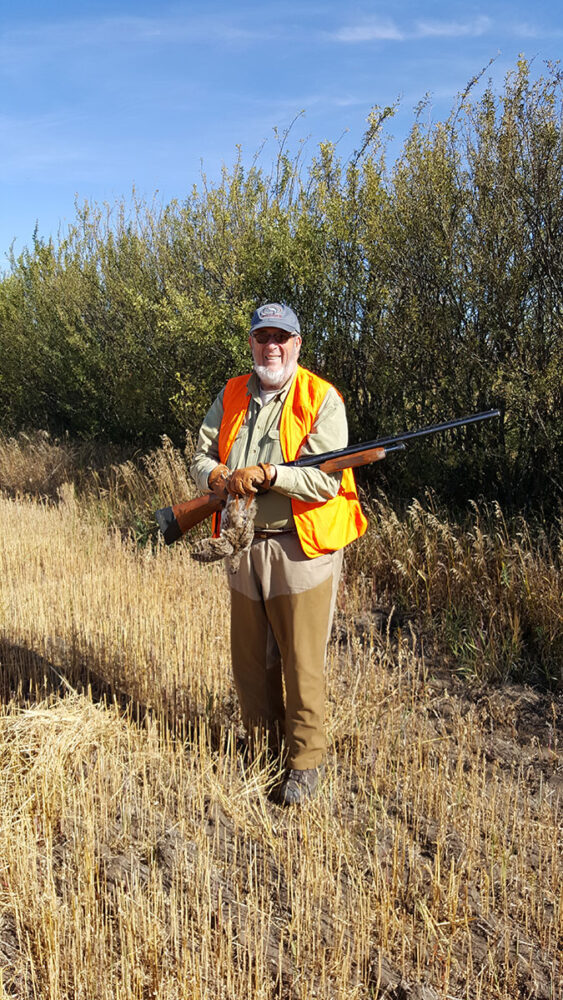
Hunting is always a challenge, even in Saskatchewan. But there are red letter days.
Fifteen minutes later Jim and I, urged on by our three fellow hunters, hurriedly swapped our upland guns, shells and gear for waterfowl equipment. Five shooters, Colin and Bentley piled into two trucks. It was a tight fit. Bentley led off and Colin followed, with his truck towing a trailer full of decoys and layout blinds.
We drove down a two track, passed an old, abandoned farmstead, and into a cut pea field. Bentley’s truck barreled along the edge of the field, then slowed, turned right and drove into the harvested field to the top of a rise. He got out of his truck, threw a handful of dirt into the air to check the wind and motioned to us.
“Here. This is a good spot. Saw them here this morning. Let’s unload. Me and Colin’ll set up the decoys. You boys set up the layouts and brush ’em up good.. You know the drill.”
We knew the drill. I grabbed a rake out of Colin’s truck bed and started making piles of loose pea stems for us to use. The rest of us set up the blinds, placing them so that the wind would be at our backs. Decoying birds would come in looking at us – but the sun would be at our backs and the glare in their eyes. We all went to work, smiling.
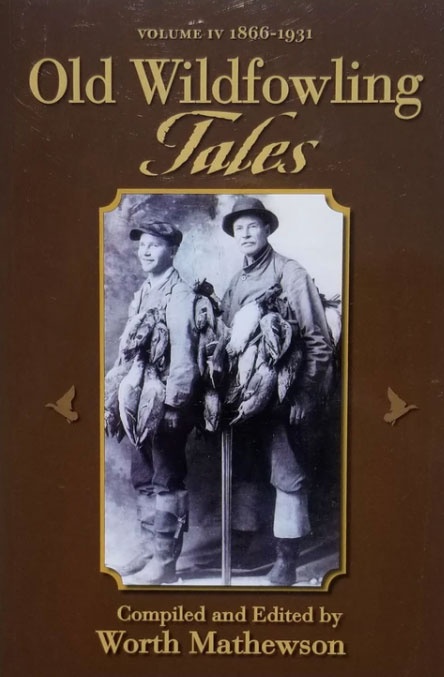 Welcome to the fourth volume of historic waterfowling stories by noted author, editor, photographer and waterfowler, Worth Mathewson. Readers will experience the excitement afield told by those for whom wildfowling was more than sport, it was a way of life. Enjoy the thrill of the hunt and gain vivid historical insight to life during the years 1866-1931 as you read tales written by hunters whose quest for waterfowl was passionate, immediate and invigorating. Buy Now
Welcome to the fourth volume of historic waterfowling stories by noted author, editor, photographer and waterfowler, Worth Mathewson. Readers will experience the excitement afield told by those for whom wildfowling was more than sport, it was a way of life. Enjoy the thrill of the hunt and gain vivid historical insight to life during the years 1866-1931 as you read tales written by hunters whose quest for waterfowl was passionate, immediate and invigorating. Buy Now
